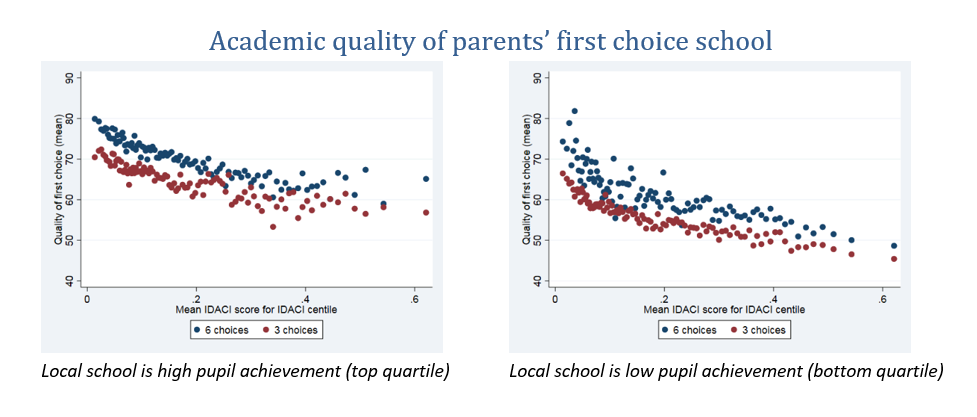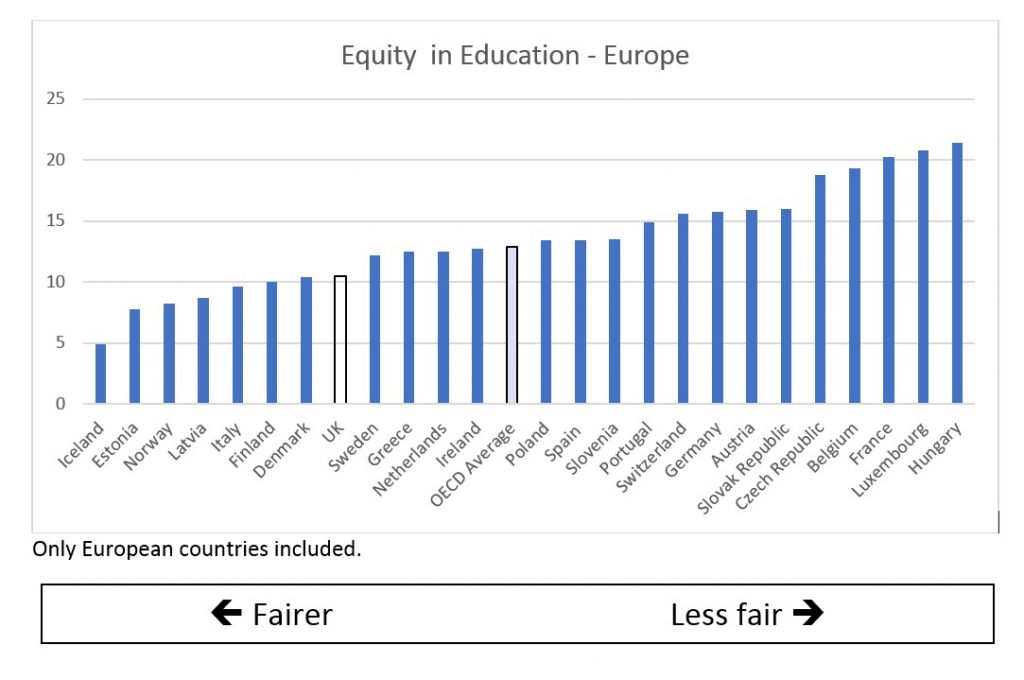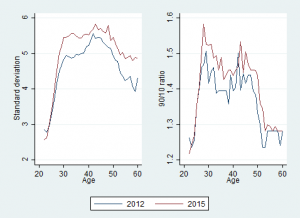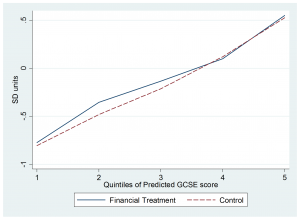Simon Burgess and Rich Harris
A new measure of segregation has been proposed by the iCoCo Foundation, School Dash, and The Challenge, which is a charity for building a more integrated society. It appears in the report, Understanding School Segregation in England, 2011-16, where the method, details of which can be found here, has been used to look at ethnic and social segregation between schools in England. The report states,
Across all schools in 2016, 26% of primary schools and 40.6% of secondary schools were found to be ethnically segregated or potentially contributing to segregation by our measure; while 29.6% of primary schools and 27.6% of secondary schools were found to be segregated by socio-economic status, using FSM-eligibility as a proxy (p.13 of The Challenge’s report, emphasis added)
And the first of six recommendations is:
As part of its response to the Casey Review [Casey 2016], the Government should recognise the trends that Casey, ourselves and many others have identified and set a clear direction to reduce the growth of school segregation and to reduce segregation wherever it is at a high level and encourage all agencies to act accordingly, providing advice, support, guidance and resources as appropriate (p.17, emphasis added)
Whilst few would argue against reducing segregation, the assertion that it is growing is contentious. There have been a number of claims that segregation is increasing (for example here). However, the very clear consensus is that ethnic residential segregation fell between the 2001 and 2011 population censuses in England. In regard to ethnic segregation between schools, one of us has shown that the overall trend is downwards (see Burgess here). This difference in conclusion raises two important issues: what do we mean by segregation, and how does this ‘new measure’ difference from more established approaches, potentially affecting its results?
Let’s begin with segregation. It’s an emotive word that conjures up pejorative meaning in the press and in public debate so it has to be used with care and clarity. The widespread academic meaning is simply one of looking to see whether the places where one ethnic group is more likely to be found are also the places where another group is not: to say “segregation is high” is to describe a situation where ethnic groups are spread very unevenly between different schools and largely in different schools from one another. The standard measure of segregation quantifies this unevenness but offers no insight on how it occurs. Segregation is typically conceived as the net outcome of a number of often inter-connected processes, embodying the decisions of different people and institutions, and of the structural constraints upon them such as the operations of the housing and labour markets.
The data and interest to measure segregation grew up in the 1950s, particularly initially in the US with a focus on black-white segregation within cities. Standardised ways of measuring were developed, indices were compared, and their statistical and technical properties established. The most commonly used measure is the Index of Dissimilarity (D index), which measures the extent to which the composition of individual units (such as schools, neighbourhoods or city blocks) differ across a study region. It captures the key part of the definition of segregation, namely separation: it measures the extent to which different groups are found apart in separate housing, separate schools, or separate jobs. This is a tried and trusted measure, with well-understood properties and with a huge back catalogue of comparable results. It can also be decomposed; for example, to gauge the contribution of different types of school to the overall value or even to assess scale effects (is segregation happening at the micro-, meso- or macro-scales?). This is the measure both of us have used to understand patterns of ethnic segregation in England’s schools, including analysis of the levels and trends in ethnic segregation (for example Burgess and Wilson, 2005; Harris, 2017).
So questions arise: why a new measure? What is the added value in basing a measure on a comparison of the school with its local neighbourhood? How does it relate to the Dissimilarity Index, and does it tell us anything new about segregation?
What the new measure tries to capture is the difference between schools and their neighbourhoods on the basis that the ethnic composition of a school ‘ought’ to reflect that of its surrounding neighbourhoods if admissions into that school are geographically determined and unbiased against race, social class, prior attainment, and so forth. This is not the first time that the differences between schools and neighbourhood have been measured (see Burgess et al, 2005; Johnston et al 2006) and the Casey Review makes much of the fact that, “the school age population is even more segregated when compared to residential patterns of living” (p.11) [but that’s most likely a demographic effect and not evidence that the segregation is increasing: see Harris, 2017]. However, rather than looking at the ethnic composition of neighbourhoods directly the measure actually takes a proxy for the ‘local area’ by averaging the characteristics of the nearest 10 other schools to the one under consideration. The assumption is that any school’s intake should be the same as the average of its 10 nearest neighbours.
We will return to that assumption presently. Before doing so we note that this is not a measurement of segregation as widely understood because it no longer considers segregation as an overall outcome. Instead, it is a partial look at the differences between where people live and where they go to school; differences perhaps due to the ways that the school admissions system works but perhaps also due to the school choices people make.
The difference in what is meant by segregation is easy to see with an example. Imagine a city with two ethnic groups who largely live in different zones of the city (residential segregation is very high). There are ten schools in each of the two zones of the city – each zone is entirely mono-ethnic and so are its ten schools. The standard D index would say that school segregation in this city is very high. Half the schools have 100% pupils from one group and the other half have 100% from the other group, so this is maximum separation, maximum segregation. The new measure, however, would say that there was low or zero segregation, with most or all schools having the same ethnic composition as their neighbours and their local area. It seems to us that the standard measure would fit better with how many people would describe the city. It would be peculiar to claim that a very divided city, with very divided neighbourhoods and therefore very divided schools is experiencing no segregation!
What the new measure really means is that there is no additional segregation, once neighbourhood sorting has been taken into consideration. That is an interesting point-of-view, especially if we change the example and imagine two very ethnically mixed zones of a city, within which one particular school nevertheless obtains a very mono-ethnic intake. Such a circumstance would raise questions about the processes of school choice or of admission that led to a locally uneven outcome. However, there are problems with this approach. First, it implies that segregation caused by the school admission process can be measured independent of (having controlled for) segregation from neighbourhood sorting. In practise the two are interrelated: think of the way house prices increase around the most sought after schools. Second, as we have noted, the authors actually measure the ‘local area’ by averaging the characteristics of each school’s 10 nearest neighbours.
The choice of 10 seems very arbitrary and will mean different things in different areas – notably areas of high population density versus those that are sparse. More specifically, it is hard to understand why the best choice is 10 schools for both primary and secondary sectors when there are about 7 times more primary schools than secondary schools. The nature of bunching of schools in urban spaces is likely to mean that some schools are used in a large number of these comparisons; conceivably a single school might be in the “nearest 10 schools” for all the schools in an urban LA. This gives that school a lot of statistical ‘leverage’. If such schools are also unusual in their composition (which an urban centre school might be), then this makes the measure very dependent on those few high-leverage schools. It’s also not necessarily the case that the 10 nearest (by straight line distance) are also the 10 most easily reached. The measure ignores any natural or human made barriers that would prevent the one school recruiting from the same admission spaces as the other ten. It also does not weight for distance, since it is reasonable to suppose that the first closest school should be the most similar and the tenth nearest the least. In fact, the general approach of identifying local comparison groups for schools is not new and other more sophisticated approaches have been used, for example modelling the de facto catchment areas of schools and where they appear to be ‘competing’ or defining the admission spaces of schools in some way to compare school intakes with the composition of neighbourhoods (Harris, 2011, and for a relevant critique of the approach: Watts, 2013; Harris et al., 2013).
The nature of the measure means that there are a number of specific decisions made in its construction that are questionable and will have significant impacts on its results. Why is segregation defined by a ratio split and an absolute point split? Why is the ratio “half or double”, and are the results of the study robust to other plausible values? Why is the absolute point split set to 15 percentage points, and again, does it matter?
Two specific issues are highlighted in the report: the role of faith schools and trends in the data. On the former it is well known that faith schools, because they tend to recruit over larger areas (with admission policies that are less geographically determined), because there can be an element of selection (by religious practise) and because different types of faith school can appeal differently to different ethnic groups so they can have intakes that differentiate them from other surrounding schools, sometimes appearing more socially privileged. The role of faith schools and their admission policies is an area of on-going debate (the Prime Minister has recently suggested that the limit on the number of children a school can recruit on a faith criterion will be removed). However, faith schools are a heterogenous group – as a category it masks diversity.
With consideration to the overall trend in school segregation, ethnic segregation in schools is falling overall using the traditional measures. While there are undoubtedly some places for which it is increasing, that can happen when ‘minority’ groups are, on average, younger than the White British and so there are more children or particular ethnicities in particular places. In fact, while not actually mentioned in the report, and standing against some of the slightly alarmist discussion, even on this new measure, the overall trend in school segregation is down. On p. 13, the report states that “For secondary schools, 64 areas saw an increase in the number of segregated schools, whereas 74 saw a decrease (with 12 seeing no change).” So there was an increase in 43% of areas on this new measure, some of which may be large and some of which may be small.
In summary, local measures and comparisons have a role and are useful. But they do not measure ‘segregation’ as it is usually understood and they are not unproblematic. The authors say that the new measure is “fairer and more accurate”: we would dispute this.
Two final points on an implicit link between this measure and policy ideas. First, we need to be careful about drawing attention to, and making policy based on, any exception to a general rule. We will always find places where segregation is increasing though usually only in the short term due to demographic changes. But if the overall trend is one of decreasing segregation – however measured – then that is the key result that needs to be emphasised. Second, the idea behind the new measure – comparing the composition of a school to its neighbourhood – risks implying some recommendations that might be counter-productive. Taking the base view here that schools should reflect their areas, and focussing for a moment on social segregation – segregation by eligibility for Free School Meals – the seemingly natural implication follows that we should ensure poor children go to school in poor neighbourhoods and affluent pupils go to school in affluent neighbourhoods. This is an anathema to us and is surely destined to reduce social mobility and reduce contact between ethnic groups.
References
Burgess, S. and Wilson, D., (2005) Ethnic segregation in England’s schools. Transactions of the Institute of British Geographers, vol 30 (1), pp. 20 – 36
Burgess, S., Wilson, D. and Lupton, R. (2005) Parallel Lives? Ethnic Segregation in Schools and Neighbourhoods. Urban Studies vol. 42 no. 7
Casey L. (2016) The Casey review: A review into opportunity and integration. London: Department for Communities and Local Government
Harris R, 2011, Measuring Segregation a Geographical Tale. Environment and Planning A, 43, 1747 – 1753
Harris R, Johnston R, Jones K, Owen D, (2013), Are indices still useful for measuring socioeconomic segregation in UK schools? A response to Watts. Environment and Planning A, 45, 2281 – 2289
Harris R, (2017), Measuring the scales of segregation: looking at the residential separation of White British and other school children in England using a multilevel index of dissimilarity. Transactions of the Institute of British Geographers, in press
Johnston R, Burgess S, Wilson D, Harris R, 2006, School and Residential Ethnic Segregation: An Analysis of Variations across England’s Local Education Authorities. Regional Studies, 40, 973 – 990
Watts M, 2013, Socioeconomic segregation in UK (secondary) schools: are index measures still useful? Environment and Planning A, 45, 1528 – 1535





